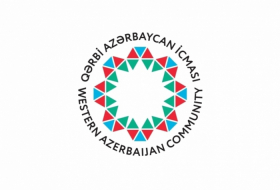At least 100 people were still missing after the three-week long rescue operation. Rumors are widespread about human remains being found at the site by local children and people who scavenge scrap metal from its foundations.
A boy keenly confirms this by drawing attention to a pond beside the rubble. Plunging his hand into the murky water, he produces a blackened human bone.
Few deny Bangladesh’s garment sector has moved on in the two years since the disaster, which put a spotlight on the industry’s unsafe buildings, violations of workers` rights, government neglect and the responsibility of western brands.
The brands, many of which sourced from factories in the building, had promised compensation for the families of killed workers and for the rehabilitation costs for the 2,500 survivors.
The compensation pot is still however a full $6 million below the $30 million mark, which was considered a minimum. It only reached that mark after a last-minute flow of contributions ahead of the second anniversary, including a $1 million input from Italian brand Benetton.
Half of the total compensation has been provided by the Ireland-based Primark, which had a heavy presence in the factories. Some brands have contributed nothing.
The efforts at rehabilitation of workers have received praise from many quarters for the relief they have offered the survivors. But they have also been fractured, with various NGOs, authorities and western brands operating separate schemes.
This has frustrated many of the survivors, who are upset about receiving unequal compensation and feel they have not been consulted about their needs.
Nilufa Begum, 35, spent nine hours trapped inside the building before she was saved. Despite being transferred from hospital to hospital, she has had no surgery or physiotherapy and her foot is still bent out of shape. She has to rely on crutches, which prevents her from returning to work in the factories.
Begum was trained by an NGO, the Center for Services and Information on Disability, in running a business. She was also given goods to start a small shop. She claims, however, that it has only caused her more stress.
Begum produces a green booklet, a record of her debt. She says that she has had to take loans to buy extra goods because much of the 35,000 taka ($450) worth of goods she was provided with had either expired or garnered no demand in her community.
Begum also says that the 10-month training she was given meant she was not eligible for more compensation. She adds that paying off her debt, which requires daily payments, has prevented her from saving for further medical treatment.
“It’s been two years now, people used to come and check how I was doing but not anymore. I have to do something. My life cannot go on like this,” Begum says.
The struggle to meet daily needs is one faced by more than half of Rana Plaza survivors, according to a survey released Wednesday by poverty prevention charity ActionAid Bangladesh. Almost two-thirds still suffer from depression and trauma.
Feli, also 35, was also given support to start a shop as part of her rehabilitation but complains it has made her life more complicated.
“They gave us the shop and 35,000 taka worth of goods and that’s it,” she says. “Is this 35,000 taka securing our future?”
Feli says that her family has not been able to pay the rent for the shop or their home for the past five months; they cannot return to their village as her husband had to sell his land.
“We’re stuck in Dhaka and I can’t work, I can’t do anything,” she says.
While the disparate rehabilitation programs mean survivors have varying experiences and complaints, the feeling that they have been exploited is common, according to labor rights lawyer Chaumtoli Huq.
Huq says many of the programs implemented by brands and NGOs presented serious shortcomings, especially those that ask survivors to start businesses.
“You need two to three years to start up a business. You can’t just give capital to start up a shop,” says Huq. “Is it just for show or for genuine rehabilitation?”
She says she is particularly concerned by micro-finance schemes, which essentially put survivors in debt despite many of them still being traumatized.
“I was in court with a Tazreen fire survivor and she said to me: ‘it feels like people are doing business on our bodies,’” says Huq, referring to a factory fire that killed more than 100 people only months before the Rana Plaza collapse.
“You can’t expect the charity of businessmen to improve labor rights,” says Huq.
More about:
















































